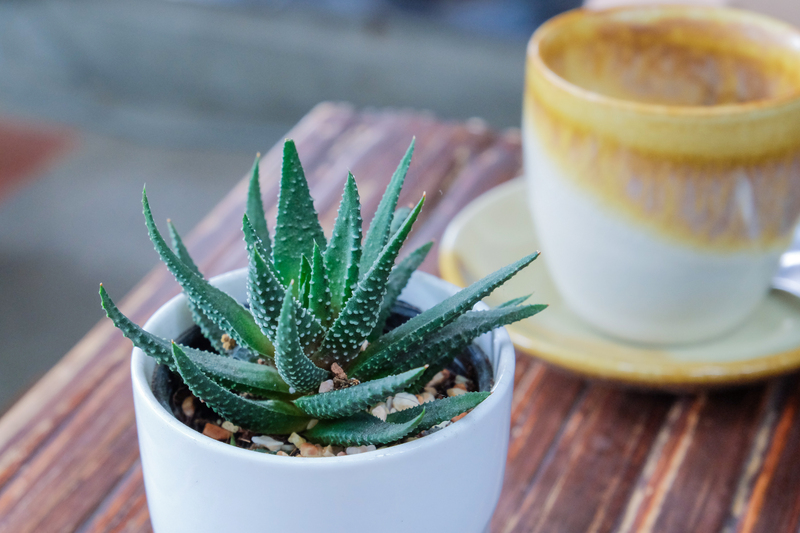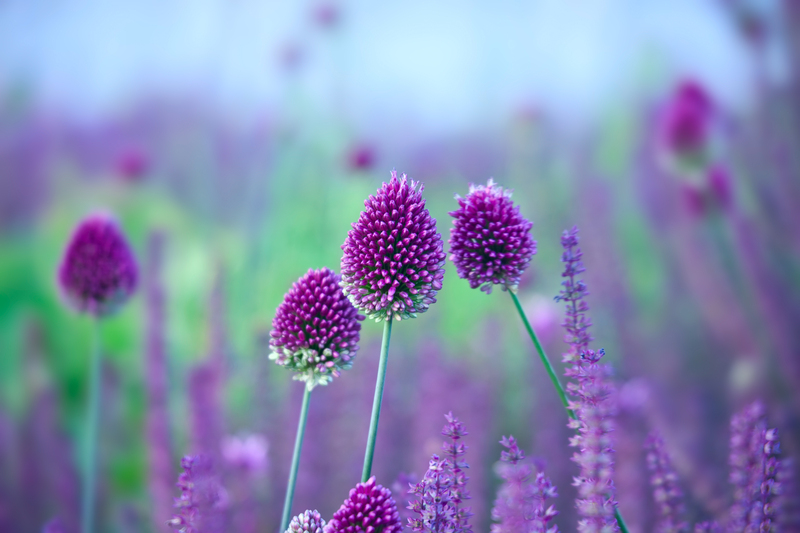Essential Tips for Preventing Summer Drought Stress on Your Lawn
Maintaining a lush, green lawn during the sizzling summer months can be a real challenge. Drought conditions and relentless heat put significant stress on grass, turning vibrant lawns into dry, brown patches. Fortunately, with the right lawn care practices and timely interventions, you can protect your turf from summer drought stress and preserve its beauty throughout the hottest days.
Understanding Summer Drought Stress in Lawns
Summer drought stress occurs when the combined effects of high temperatures and inadequate rainfall prevent your lawn from receiving the necessary moisture it needs to thrive. Grass naturally goes dormant to conserve water during extended dry periods, but prolonged drought can cause permanent damage, making recovery slow and difficult.
Typical symptoms of drought-stressed lawns include:
- Grass blades turning a bluish-gray color
- Footprints or mower tracks that don't disappear quickly
- Browning or thinning patches across the lawn
- Soil that feels hard and compacted
Recognizing these signs early is crucial for effective drought prevention. Implementing proactive summer lawn care minimizes water stress and keeps your grass healthy, resilient, and green all season long.

Top Strategies for Preventing Summer Drought Stress on Your Lawn
1. Choose the Right Grass Species
Selecting drought-tolerant grass varieties is a smart foundation for any lawn in warm climates. Cool-season grasses such as Kentucky bluegrass and perennial ryegrass struggle under prolonged heat, while warm-season grasses such as bermudagrass, zoysia, and buffalo grass offer superior resistance to drought and heat stress.
Consult with a local turf expert or your county extension office to identify the best grass type for your region and soil conditions to improve drought tolerance naturally.
2. Water Deeply but Infrequently
Watering is the most important factor in avoiding drought stress. Many homeowners make the mistake of frequent, shallow waterings that encourage weak root systems. Instead, water your lawn deeply and less often to train roots to grow deeper, increasing the turf's drought resilience.
- How much should you water? Most established lawns require about 1 to 1.5 inches of water per week during hot and dry weather. This can be supplied from rainfall or supplemental irrigation.
- Ideal timing: Water early in the morning--preferably before 10 a.m.--to reduce evaporation loss and fungal disease risk.
- Avoid watering in the heat of the day (especially between noon and 4 p.m.).
Use a rain gauge or empty tuna can to monitor how much moisture your sprinkler delivers and ensure even coverage across your lawn.
3. Mow High and Mow Less Frequently
Proper mowing is essential for reducing drought stress on your lawn in summer. Cutting grass too short exposes soil, causing excessive moisture loss and promoting weed growth.
- Set your mower blade higher: Maintain a mowing height of 3 to 4 inches for most turfgrasses during summer. Longer grass blades shade soil, keep roots cool, and retain moisture better.
- Never remove more than one-third of the blade height in a single mowing. This practice minimizes lawn shock and maintains adequate photosynthesis.
- Sharpen your mower blades regularly for clean cuts that decrease plant stress and vulnerability to disease.
Bonus tip: Leave grass clippings on the lawn (mulching) to recycle nutrients and further reduce moisture evaporation.
4. Fertilize Wisely and Avoid Summer Nitrogen
Overfertilizing, especially with nitrogen during hot, dry weather, can exacerbate drought stress and damage your lawn. The increased leaf growth prompted by nitrogen demands more water than roots can supply during drought.
- Apply fertilizers sparingly in summer or wait until early fall or late spring when temperatures are milder.
- Use slow-release and organic fertilizers, which provide nutrients without causing rapid, water-demanding growth.
- Test your soil to understand what nutrients your lawn needs--excessive or unnecessary feeding can worsen drought impacts.
5. Improve Soil Health and Aeration
Healthy soil is the foundation for a drought-resistant lawn. Compacted or clay-rich soils impede water infiltration, making your lawn prone to stress and runoff. Summer is not the best time to aerate, but regular core aeration in spring or fall improves root growth, soil structure, and moisture retention.
- Apply compost or organic matter annually to boost soil fertility, increase microbial activity, and enhance water-holding capacity.
- Check for soil compaction by probing your lawn with a screwdriver. If penetration is difficult, aeration is needed.
6. Mulch Bare Spots and Edges
Bare soil along borders, under trees, or in shady corners of the yard loses moisture quickly and is prone to weed invasion. Apply a 2-3 inch layer of organic mulch (like shredded bark, wood chips, or compost) around tree bases and garden beds adjacent to the lawn. Mulching creates a vapor barrier, conserves soil moisture, and reduces drought-related stress.
7. Manage Lawn Traffic During Heatwaves
Heavy use of the lawn during the hottest part of the year can damage drought-stressed grass. Restrict kids, pets, and recreational activities on the turf during severe drought or when the lawn is already dormant. Signs of traffic stress show as worn or bare patches that recover slowly without sufficient moisture.
- Consider setting up designated play areas or temporary walkways to protect vulnerable lawn sections.
- Repair or overseed damaged spots in early fall when conditions improve.
8. Control Weeds and Pests
Weeds compete directly with grass for water, nutrients, and sunlight, making summer drought stress even worse. Maintain a consistent weed control program with manual removal or spot-treat with eco-friendly herbicides when needed.
- Monitor for signs of insect pests, such as chinch bugs or grubs, which become active in hot, dry weather and further weaken lawns.
- Promote beneficial insects and maintain biodiversity to help keep pest problems in check naturally.
Helpful Water Conservation Tips for Summer Lawn Health
During drought conditions, it's essential to use water efficiently. Here are vital tips for conserving water and still maintaining a green lawn:
- Install efficient irrigation systems, such as drip or soaker hoses, which minimize evaporation and direct water at the root zone.
- Use rain barrels, if permitted, to collect and reuse rainwater for lawn irrigation.
- Set sprinklers to avoid sidewalks and driveways, zeroing in on grass areas only.
- Consider smart controllers or timers for irrigation to adjust watering schedules automatically based on weather and soil moisture levels.
If you face ongoing watering restrictions, prioritize high-traffic or showcase areas of your lawn and let other parts go dormant until rain returns.
The Importance of Letting Lawns Go Dormant
Don't panic if your lawn turns brown during a severe drought. Many cool-season grasses go dormant as a natural survival mechanism, and with as little as half an inch of water every 2-3 weeks, most lawns will survive until rains return.
- Do not fertilize or overseed dormant lawns, as these practices can cause further stress.
- Avoid excessive foot traffic and mowing until your grass has revived with cool weather and rainfall.
Once regular watering resumes, most healthy lawns bounce back with minimal intervention.

Frequently Asked Questions About Preventing Lawn Drought Stress
How can I tell if my lawn is experiencing drought stress?
Symptoms include dull, wilted, or grayish grass, visible footprints, and overall slow or no growth. Check soil moisture by probing 2 inches below the surface--dry, crumbly soil signals drought stress.
Should I water my lawn every day during a heatwave?
No. Watering deeply 1-2 times per week is far better than light, daily sprinkling. Deep irrigation encourages deeper roots, which improve drought tolerance.
What height should I mow my grass in the summer?
Set your mower as high as possible without scalping. 3 to 4 inches is ideal for most home lawns during peak summer.
Will my lawn recover after severe drought?
Most grasses recover well if roots are alive and receive adequate moisture after dormancy. However, extremely long drought or repeated stress years may require overseeding or renovation in the fall.
What's the best time of day to water my lawn?
Early morning (before 10 a.m.) is best, as this reduces evaporation and allows grass to dry before evening, lowering disease risk.
Conclusion: Your Checklist for Preventing Summer Drought Stress on Lawns
Protecting your lawn from summer drought stress takes advance preparation and consistent, thoughtful care. With proper grass selection, deep and mindful watering, smart mowing, and attention to soil health, you can foster a resilient, green lawn even when dry conditions prevail.
- Choose drought-tolerant grass varieties.
- Water deeply and infrequently.
- Keep grass taller in summer and mow less often.
- Limit fertilization and avoid summer nitrogen boosts.
- Improve soil with annual compost and periodic aeration.
- Mulch bare areas to conserve soil moisture.
- Minimize lawn traffic during severe heat or drought.
- Control weeds and monitor for pests.
- Utilize smart water conservation strategies.
Implement these essential summer lawn care tips to minimize drought stress, protect your investment, and enjoy a beautiful, vibrant outdoor oasis all season long.
For more information on avoiding summer drought damage, consult your local agricultural extension service or reach out to a turf care professional.
Remember: Preventing drought stress is easier--and more effective--than bringing a stressed lawn back to health!